In a world where health trends come and go, plant-based supplements have emerged as a steady force in the wellness arena. More than just a passing fad, these natural powerhouses offer numerous benefits that are hard to ignore. They support various aspects of health, including weight management is a goal many strive for but often find challenging. If you’re ready to embrace a cleaner approach to wellness, explore trusted plant-based supplements and Order Today to take the first step. As we navigate through the complexities of modern diets and lifestyle choices, it’s critical to understand how incorporating plant-based supplements can be an effective addition to your weight loss journey. But what exactly do they bring to the table? Let’s delve deeper into how these green allies can elevate your healthy weight loss plan while busting some common myths along the way.
The Importance of a Healthy Weight Loss Plan
Embarking on a weight loss journey is about more than just shedding pounds. It’s about fostering a healthier lifestyle that supports both physical and mental well-being. A healthy weight loss plan prioritizes balanced nutrition over drastic diets. It encourages sustainable changes rather than quick fixes, promoting long-term success. When you nourish your body with the right foods, it fuels energy levels and enhances mood. Incorporating regular exercise into your routine amplifies these benefits. Movement not only aids in burning calories but also strengthens muscles and improves cardiovascular health.
Common Misconceptions About Plant-Based Supplements
Many people believe that plant-based supplements alone can lead to significant weight loss. This is a common misconception. Supplements work best when combined with a balanced diet and regular exercise. Another myth is that all plant-based supplements are entirely safe. While many are beneficial, some can interact with medications or have side effects. It’s crucial to research each supplement thoroughly. Some assume that if it’s natural, it’s automatically effective for weight loss. However, effectiveness varies from person to person based on individual body types and health conditions.

Types of Plant-Based Supplements That Can Support Weight Loss
There are several plant-based supplements that can aid in weight loss. Each offers unique benefits, making them valuable additions to your regimen. Green tea extract is a popular choice. Rich in antioxidants, it boosts metabolism and enhances fat oxidation during exercise. Garcinia cambogia is another contender. This tropical fruit contains hydroxycitric acid, which may help suppress appetite and inhibit fat production. Then there’s glucomannan, derived from the konjac root. It’s a soluble fiber that expands in your stomach, promoting feelings of fullness and reducing overall calorie intake.
Incorporate Plant-Based Supplements Into a Balanced Diet
Incorporating plant-based supplements into your balanced diet can be both simple and rewarding. Start by integrating them gradually to see how they fit into your routine. Consider adding a scoop of protein powder made from peas or brown rice to your morning smoothie. This boosts nutrition without compromising flavor. For those seeking extra fiber, chia seeds or flaxseeds are great options. They blend seamlessly into oatmeal or yogurt, enhancing satiety and digestive health. Herbal extracts like green tea or Garcinia Cambogia can support metabolism when taken alongside meals. Just ensure you follow the recommended dosages for best results.
Exercise and Its Role in Weight Loss With the Help of Plant-Based Supplements
Exercise is a cornerstone of any effective …






 The course layout sets the stage for your entire round of golf. Each course has its own personality, presenting a mix of challenges and opportunities that you must navigate strategically.
The course layout sets the stage for your entire round of golf. Each course has its own personality, presenting a mix of challenges and opportunities that you must navigate strategically. 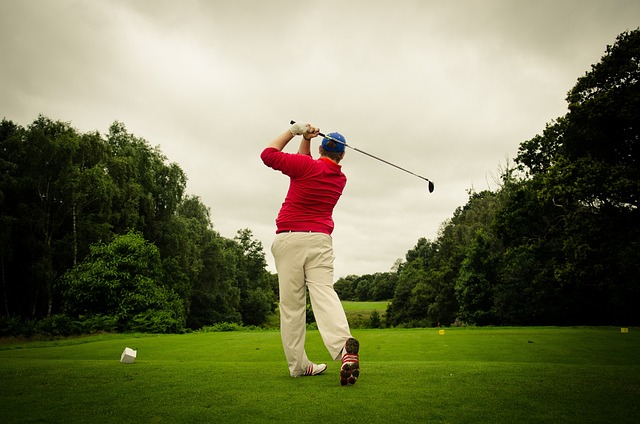



 Medication management is vital to senior care, ensuring that seniors take the right medications at the right time. Traditional methods of managing medications can be challenging and prone to errors. However, with technological advancements, medication management systems have become more efficient and reliable. One innovative solution is automated pill dispensers. These devices are equipped with electronic sensors and timers that remind seniors when to take their medication. The dispenser can also dispense the correct dosage at the scheduled time, eliminating any confusion or potential mistakes.
Medication management is vital to senior care, ensuring that seniors take the right medications at the right time. Traditional methods of managing medications can be challenging and prone to errors. However, with technological advancements, medication management systems have become more efficient and reliable. One innovative solution is automated pill dispensers. These devices are equipped with electronic sensors and timers that remind seniors when to take their medication. The dispenser can also dispense the correct dosage at the scheduled time, eliminating any confusion or potential mistakes. Reishi is a type of functional mushroom used for ages in Chinese herbal remedies to treat various ailments. It’s also known as the “mushroom of immortality.” Recent research suggests that reishi may have potent anti-inflammatory effects, making it such a powerful natural remedy for those suffering from inflammatory conditions. In the IJMS (International Journal of Molecular Sciences), we found that reishi extract can inhibit inflammation by reducing the production of pro-inflammatory molecules like interleukin-6 (IL-6), tumor necrosis factor-alpha (TNF-alpha), and nitric oxide (NO). These molecules act as a major role in the development and progression of chronic inflammation.
Reishi is a type of functional mushroom used for ages in Chinese herbal remedies to treat various ailments. It’s also known as the “mushroom of immortality.” Recent research suggests that reishi may have potent anti-inflammatory effects, making it such a powerful natural remedy for those suffering from inflammatory conditions. In the IJMS (International Journal of Molecular Sciences), we found that reishi extract can inhibit inflammation by reducing the production of pro-inflammatory molecules like interleukin-6 (IL-6), tumor necrosis factor-alpha (TNF-alpha), and nitric oxide (NO). These molecules act as a major role in the development and progression of chronic inflammation.

 What makes these three types of dementia a real problem for human beings is that they have no cure or proper medications that can delete them once and for all. So preventing dementia is the best thing we can do. It’s all about maintaining a healthy lifestyle. Eating a balanced diet, exercising regularly, and staying socially active are just some ways to try to reduce your risk of developing dementia.
What makes these three types of dementia a real problem for human beings is that they have no cure or proper medications that can delete them once and for all. So preventing dementia is the best thing we can do. It’s all about maintaining a healthy lifestyle. Eating a balanced diet, exercising regularly, and staying socially active are just some ways to try to reduce your risk of developing dementia. The most common cause of curled toenails is a fungal infection, which can cause the toenails to take on a yellowish hue and become brittle over time. This fungal infection is typically caused by wearing shoes that fit too tightly or not drying your feet properly after swimming or bathing. Fungal infections create an environment where the infection can spread and lead to nail thickening or discoloration. If left untreated, a fungal infection can cause serious health issues such as foot ulcers, nail or surrounding skin infections, and the affected toes’ deformity.
The most common cause of curled toenails is a fungal infection, which can cause the toenails to take on a yellowish hue and become brittle over time. This fungal infection is typically caused by wearing shoes that fit too tightly or not drying your feet properly after swimming or bathing. Fungal infections create an environment where the infection can spread and lead to nail thickening or discoloration. If left untreated, a fungal infection can cause serious health issues such as foot ulcers, nail or surrounding skin infections, and the affected toes’ deformity.


 The fourth and final tip to gaining muscle mass is to focus on
The fourth and final tip to gaining muscle mass is to focus on  Organic tea is an excellent choice for hydration. The leaves are grown without pesticides or chemicals, so you can be sure that you’re getting all the benefits of tea without any toxins. Tea is a natural source of antioxidants, which can help to protect your body from damage caused by free radicals. Free radicals are unstable molecules that can cause cell damage, leading to disease. Antioxidants help to neutralize free radicals, so they can’t do any harm. Drinking organic tea is a great way to get your daily dose of antioxidants.
Organic tea is an excellent choice for hydration. The leaves are grown without pesticides or chemicals, so you can be sure that you’re getting all the benefits of tea without any toxins. Tea is a natural source of antioxidants, which can help to protect your body from damage caused by free radicals. Free radicals are unstable molecules that can cause cell damage, leading to disease. Antioxidants help to neutralize free radicals, so they can’t do any harm. Drinking organic tea is a great way to get your daily dose of antioxidants. Organic tea can also help to control blood sugar levels. The polyphenols in tea can help slow sugar absorption into the bloodstream, preventing spikes in blood sugar levels. This is especially beneficial for people with diabetes or prediabetes. In addition, tea can help to increase insulin sensitivity, which can also help to control blood sugar levels. However, it’s important to note that organic tea does contain caffeine, so it’s best to avoid drinking it too close to bedtime.
Organic tea can also help to control blood sugar levels. The polyphenols in tea can help slow sugar absorption into the bloodstream, preventing spikes in blood sugar levels. This is especially beneficial for people with diabetes or prediabetes. In addition, tea can help to increase insulin sensitivity, which can also help to control blood sugar levels. However, it’s important to note that organic tea does contain caffeine, so it’s best to avoid drinking it too close to bedtime. The keto diet is not a quick fix. To see results, you need to be willing to commit to the diet and stick with it. It means making lifestyle changes that may be difficult at first but will pay off in the long run.
The keto diet is not a quick fix. To see results, you need to be willing to commit to the diet and stick with it. It means making lifestyle changes that may be difficult at first but will pay off in the long run. The keto diet is an effective treatment for epilepsy in children. Studies have shown that the diet can help to reduce seizure frequency by up to 50%. Moreover, the diet is often used as a first-line treatment for children with epilepsy who have not responded to other treatments.
The keto diet is an effective treatment for epilepsy in children. Studies have shown that the diet can help to reduce seizure frequency by up to 50%. Moreover, the diet is often used as a first-line treatment for children with epilepsy who have not responded to other treatments. CBD has been shown to help reduce anxiety in both humans and animals. In one study, CBD reduces anxiety in people with social anxiety disorder. Another study showed that CBD effectively reduced anxiety and improved sleep quality in patients with generalized anxiety disorder. People with chronic anxiety often have difficulty sleeping, leading to other health problems. CBD can help them get the rest they need without any of the side effects associated with traditional medications.
CBD has been shown to help reduce anxiety in both humans and animals. In one study, CBD reduces anxiety in people with social anxiety disorder. Another study showed that CBD effectively reduced anxiety and improved sleep quality in patients with generalized anxiety disorder. People with chronic anxiety often have difficulty sleeping, leading to other health problems. CBD can help them get the rest they need without any of the side effects associated with traditional medications. Omega-three fatty acids are essential for your body to function properly. They can lower blood triglyceride levels, reduce the risk of heart attack, and even play a role in brain development.
Omega-three fatty acids are essential for your body to function properly. They can lower blood triglyceride levels, reduce the risk of heart attack, and even play a role in brain development.  Seafood is an excellent source of calcium, making it the perfect food for strong bones and healthy teeth. Calcium can help reduce high blood pressure, keep your heart functioning properly, and improve cognitive function in both children and adults. Eat more fish to maintain better health without worrying about adding lots of milk to your diet.
Seafood is an excellent source of calcium, making it the perfect food for strong bones and healthy teeth. Calcium can help reduce high blood pressure, keep your heart functioning properly, and improve cognitive function in both children and adults. Eat more fish to maintain better health without worrying about adding lots of milk to your diet. You need to consider the type of surgery you are having. Some patients may need other surgeries or procedures to be done together with the cosmetic surgery procedure that they have chosen, so it is essential to find a clinic that offers all related treatments. There are many procedures that clinics tend to offer, so it is crucial to find a clinic that offers the surgery you want to be combined with other treatments.
You need to consider the type of surgery you are having. Some patients may need other surgeries or procedures to be done together with the cosmetic surgery procedure that they have chosen, so it is essential to find a clinic that offers all related treatments. There are many procedures that clinics tend to offer, so it is crucial to find a clinic that offers the surgery you want to be combined with other treatments. It is vital to note that there are times where certain cosmetic surgeries that do not go as initially planned. The best cosmetic surgery clinics strive to keep as many happy customers as possible and aim for a high success rate with each procedure they undertake. When you find yourself looking for an experienced clinic, you must consider their history of successful cases and the quality of work.
It is vital to note that there are times where certain cosmetic surgeries that do not go as initially planned. The best cosmetic surgery clinics strive to keep as many happy customers as possible and aim for a high success rate with each procedure they undertake. When you find yourself looking for an experienced clinic, you must consider their history of successful cases and the quality of work. Supplements do not come cheap. Before making a purchase, scout around and compare the prices of various stores. You will find stores that offer the original health supplements at pocket-friendly prices. When looking at prices, be on the lookout for a deal that is too good. In this billion-dollar industry, there are generic supplements that are usually cheaper. Remember that price goes hand in hand with quality and brand.
Supplements do not come cheap. Before making a purchase, scout around and compare the prices of various stores. You will find stores that offer the original health supplements at pocket-friendly prices. When looking at prices, be on the lookout for a deal that is too good. In this billion-dollar industry, there are generic supplements that are usually cheaper. Remember that price goes hand in hand with quality and brand.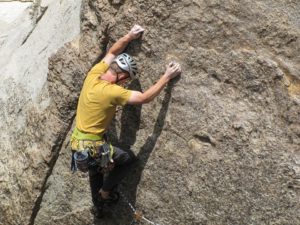 It is essential to note that trad climbing is also known as traditional climbing. Some climbers consider using it because it is easy to adapt. It uses minimal pieces of gear because rock climbers make their way up to the rock. As a trad climber, you need to carry the equipment and know-how to use it.
It is essential to note that trad climbing is also known as traditional climbing. Some climbers consider using it because it is easy to adapt. It uses minimal pieces of gear because rock climbers make their way up to the rock. As a trad climber, you need to carry the equipment and know-how to use it.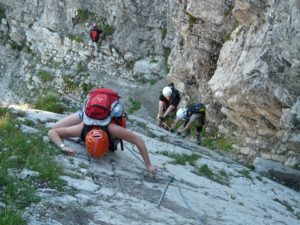 When you want to start rock climbing, one of the exciting and easiest ways to understand climbing techniques is by considering using the free solo climbing method. It is advisable to realize that free solo climbing enables the climber to use their feet and hands to scale up the rock. Also, it is critical to note that this form of rock climbing does not utilize cams, anchors, or ropes.
When you want to start rock climbing, one of the exciting and easiest ways to understand climbing techniques is by considering using the free solo climbing method. It is advisable to realize that free solo climbing enables the climber to use their feet and hands to scale up the rock. Also, it is critical to note that this form of rock climbing does not utilize cams, anchors, or ropes. The most rock climbing technique used in this sport is sports climbing. According to your experience, you can perform this sport quickly. However, this method focuses on a single movement and route. As a rock climber, you must carry quickdraws to clip to the bolts and rope for safety.…
The most rock climbing technique used in this sport is sports climbing. According to your experience, you can perform this sport quickly. However, this method focuses on a single movement and route. As a rock climber, you must carry quickdraws to clip to the bolts and rope for safety.… there is no specific age to perform a
there is no specific age to perform a 

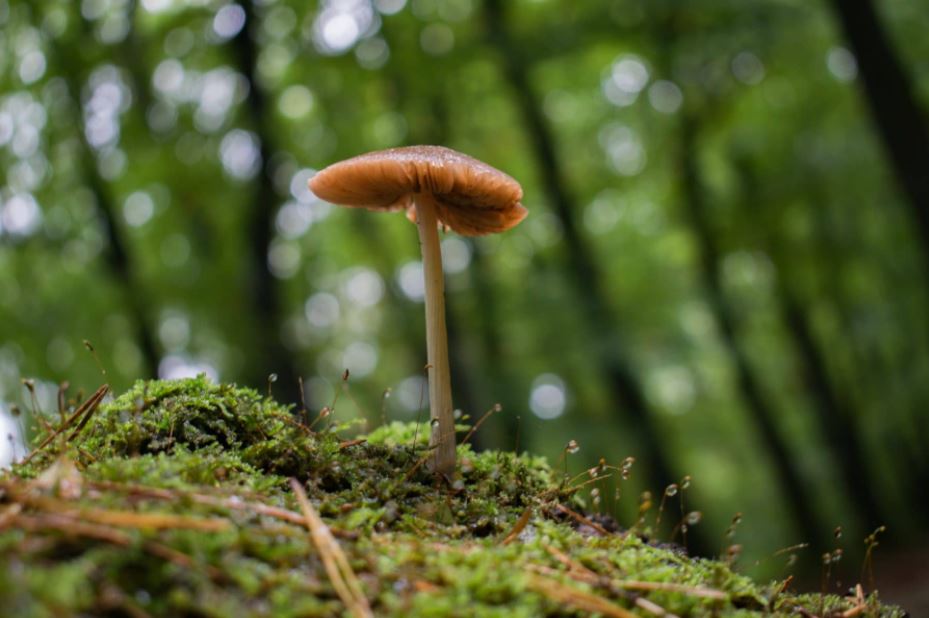 Studies carried out have also shown that magic mushrooms play an essential role in helping you deal with addiction. They can help you deal with alcohol addiction and that of other substances like cigarettes. This is attributed to the hallucinogenic substance found in them. You can use them if you are battling any form of addiction.
Studies carried out have also shown that magic mushrooms play an essential role in helping you deal with addiction. They can help you deal with alcohol addiction and that of other substances like cigarettes. This is attributed to the hallucinogenic substance found in them. You can use them if you are battling any form of addiction. beneficial during this period. M1 supplies the best reusable face covers. Large companies can now bulk order masks made in Canada and protect their entire team with three sizing options. Putting on masks that meet the required grade is essential if you want to stay free from the disease. The World Health Organization has listed different grades of covers that can offer protection against the virus. You can also get reusable face masks that meet the required standard. A reusable mask is beneficial compared to the disposable type. Here is why.
beneficial during this period. M1 supplies the best reusable face covers. Large companies can now bulk order masks made in Canada and protect their entire team with three sizing options. Putting on masks that meet the required grade is essential if you want to stay free from the disease. The World Health Organization has listed different grades of covers that can offer protection against the virus. You can also get reusable face masks that meet the required standard. A reusable mask is beneficial compared to the disposable type. Here is why. made of fabrics or materials that guarantee your comfort and ensure you breathe easily after wearing them for an extended period. Soft materials used in making them will keep you free from injuries around the nose and other parts of your mouth. How about you purchase reusable masks to enjoy these benefits.…
made of fabrics or materials that guarantee your comfort and ensure you breathe easily after wearing them for an extended period. Soft materials used in making them will keep you free from injuries around the nose and other parts of your mouth. How about you purchase reusable masks to enjoy these benefits.…
 Just like what the name implies, cool sculpting involves a technique of freezing fat cells. And if this sounds outlandish to you, you don’t need to worry about its safety because FDA has approved cool sculpting, which also goes by the name of cryolipolysis. And studies have shown that this technique can reduce fat cells by up to 20 to 25 percent in the treated area.
Just like what the name implies, cool sculpting involves a technique of freezing fat cells. And if this sounds outlandish to you, you don’t need to worry about its safety because FDA has approved cool sculpting, which also goes by the name of cryolipolysis. And studies have shown that this technique can reduce fat cells by up to 20 to 25 percent in the treated area.  Laminated Squeeze Tubes
Laminated Squeeze Tubes
 It should be clear that healthy gums are the foundation of healthy and strong teeth. By considering regular oral care, it will prevent bacteria growth, which will later lead to infectious gum disease. We have various way s of maintaining good oral hygiene.
It should be clear that healthy gums are the foundation of healthy and strong teeth. By considering regular oral care, it will prevent bacteria growth, which will later lead to infectious gum disease. We have various way s of maintaining good oral hygiene.  back to ease the pain. A professional masseur or masseuse should take charge of your back pain after a few rounds of the massage. They know the right oil to apply and the correct position you should lay. Do not tell your wife to massage you because she may not get the exact place where the pain is coming from the back.
back to ease the pain. A professional masseur or masseuse should take charge of your back pain after a few rounds of the massage. They know the right oil to apply and the correct position you should lay. Do not tell your wife to massage you because she may not get the exact place where the pain is coming from the back. next series is not healthy living. You need to burn calories and gain energy. Eating a balanced diet and sitting down without doing anything constructive does not add anything to your life. You need to have a workout time table where you exercise your body every day. Whether it is in the morning, evening, or daytime, find the right period depending on your muscles tissue.
next series is not healthy living. You need to burn calories and gain energy. Eating a balanced diet and sitting down without doing anything constructive does not add anything to your life. You need to have a workout time table where you exercise your body every day. Whether it is in the morning, evening, or daytime, find the right period depending on your muscles tissue. Behavioral health disorder is essentially an illness that is perpetuated by the decisions we make in our lives. These decisions come with an irresistible urge to repeat despite being well aware of the adverse effects they pose your life. In light of this, overcoming behavioral health issues lies in working towards resisting these compulsive behaviors and removing them from your life. Some common behavioral issues observed today include:
Behavioral health disorder is essentially an illness that is perpetuated by the decisions we make in our lives. These decisions come with an irresistible urge to repeat despite being well aware of the adverse effects they pose your life. In light of this, overcoming behavioral health issues lies in working towards resisting these compulsive behaviors and removing them from your life. Some common behavioral issues observed today include: Most people struggling with behavioral health issues experience co-occurring emotional issues and mental health disorders. In light of this fact, it becomes almost impossible for them t overcome behavioral health by just stopping in engaging in certain behaviors.
Most people struggling with behavioral health issues experience co-occurring emotional issues and mental health disorders. In light of this fact, it becomes almost impossible for them t overcome behavioral health by just stopping in engaging in certain behaviors. Bowling has been linked to several health benefits. Those people who feel that they are slowly but surely losing their killer body shapes find it wise to spend their time bowling. This is because the sport is known to have immense control over the late of metabolism in the body and this makes it effective when it comes to weight loss.
Bowling has been linked to several health benefits. Those people who feel that they are slowly but surely losing their killer body shapes find it wise to spend their time bowling. This is because the sport is known to have immense control over the late of metabolism in the body and this makes it effective when it comes to weight loss. you a lot of money. You get to pay less for your loved one to receive proper treatment over a specific period. It is different compared to the amount you spend at home taking care of them on a regular basis. Taking one to an elderly home will also grant you peace of mind. You can attend to other duties with minimal stress. There are several things you should consider when choosing a home care service. They include:
you a lot of money. You get to pay less for your loved one to receive proper treatment over a specific period. It is different compared to the amount you spend at home taking care of them on a regular basis. Taking one to an elderly home will also grant you peace of mind. You can attend to other duties with minimal stress. There are several things you should consider when choosing a home care service. They include:
 Some people have skin conditions which are visible. Therefore with the skin markers, you are assured that they will locate the raised moles with overshadowing microcalcifications. You should also understand how the devices work before you put them on your skin. For instance, when the radiolucent ring is placed around the protuberance, it will prevent the flattening which may be caused by compression.
Some people have skin conditions which are visible. Therefore with the skin markers, you are assured that they will locate the raised moles with overshadowing microcalcifications. You should also understand how the devices work before you put them on your skin. For instance, when the radiolucent ring is placed around the protuberance, it will prevent the flattening which may be caused by compression.


 from your body through sweat. Exercising will help stretch your muscles reducing the accumulation of cellulite in the process. There are different types of fitness activities that can help you with its removal. These fats tend to form a lot on the thighs so jogging would be one appropriate action because it involves the legs so much. Yoga is another recommended exercise which involves the whole body. Create your own exercising timetable and adhere to it to help eradicate cellulite.
from your body through sweat. Exercising will help stretch your muscles reducing the accumulation of cellulite in the process. There are different types of fitness activities that can help you with its removal. These fats tend to form a lot on the thighs so jogging would be one appropriate action because it involves the legs so much. Yoga is another recommended exercise which involves the whole body. Create your own exercising timetable and adhere to it to help eradicate cellulite.
 Hemp protein is considered as a protein which is complete and also a source of minerals, fiber, healthy omega-3 fatty acids and vitamins. The Cannabis sativa plant is where Hemp is derived from. It is hypoallergenic and vegan protein and is ideal for individuals with dairy, egg, gluten and soy sensitivities or allergies. Hemp protein is great for consumption of post work out because of the presence of branched chain amino acids which aid in the repair and growth of lean muscle mass of a person who is bodybuilding.
Hemp protein is considered as a protein which is complete and also a source of minerals, fiber, healthy omega-3 fatty acids and vitamins. The Cannabis sativa plant is where Hemp is derived from. It is hypoallergenic and vegan protein and is ideal for individuals with dairy, egg, gluten and soy sensitivities or allergies. Hemp protein is great for consumption of post work out because of the presence of branched chain amino acids which aid in the repair and growth of lean muscle mass of a person who is bodybuilding. All the amino acids considered to be important are found in Hemp thus making it a complete protein because of the building blocks of proteins. Hemp has lower levels of tryptophan, lysine, and leucine which help in muscle protein synthesis required for the growth of muscles in body builders. Hemp is still considered appropriate to vegan and vegetarian bodybuilders despite it having lower levels of leucine. Meanwhile, animal based proteins contain higher levels of leucine such as white meat and it is the reason why it is rated highly among bodybuilders.…
All the amino acids considered to be important are found in Hemp thus making it a complete protein because of the building blocks of proteins. Hemp has lower levels of tryptophan, lysine, and leucine which help in muscle protein synthesis required for the growth of muscles in body builders. Hemp is still considered appropriate to vegan and vegetarian bodybuilders despite it having lower levels of leucine. Meanwhile, animal based proteins contain higher levels of leucine such as white meat and it is the reason why it is rated highly among bodybuilders.… ns may have lost motor control in their arms and hands. Such people have suffered stroke or accident. The good thing about electric toothbrushes is that they are helpful in this case as they require minimal motor control in the arms and hands, and less energy is required. They are recommended for people who have difficulties using normal toothbrushes.
ns may have lost motor control in their arms and hands. Such people have suffered stroke or accident. The good thing about electric toothbrushes is that they are helpful in this case as they require minimal motor control in the arms and hands, and less energy is required. They are recommended for people who have difficulties using normal toothbrushes. ortant to understand that electric toothbrushes are quite easy to use. This is because they come with a rechargeable charger and battery. Some models do not come with chargers. It is advisable to buy models that come with one. If you are a regular traveler, you should purchase an electric toothbrush with a charger. Also, it should be smaller and convenient to carry with you.
ortant to understand that electric toothbrushes are quite easy to use. This is because they come with a rechargeable charger and battery. Some models do not come with chargers. It is advisable to buy models that come with one. If you are a regular traveler, you should purchase an electric toothbrush with a charger. Also, it should be smaller and convenient to carry with you. The most important thing when it comes to the management of acne is to prevent it. Most people do not seem to realize the fact that there are ways that can be used to ensure that acne does not affect them badly. Such people end up agonizing when they should have done away with the problem. Here are some of the practices that can help you prevent acne from disturbing your peace of mind.
The most important thing when it comes to the management of acne is to prevent it. Most people do not seem to realize the fact that there are ways that can be used to ensure that acne does not affect them badly. Such people end up agonizing when they should have done away with the problem. Here are some of the practices that can help you prevent acne from disturbing your peace of mind.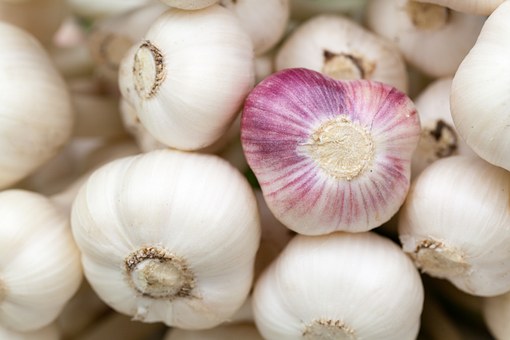 This is another home acne treatment that you can use to treat acne without having to spend. Garlic is a great antiseptic that can be used to kill bacteria. All that you need to do is to apply it around the affected area before washing it off. It is good to take note of the fact that you might feel some sting during the application of it. Check out proactiv reviews to learn more about acne.…
This is another home acne treatment that you can use to treat acne without having to spend. Garlic is a great antiseptic that can be used to kill bacteria. All that you need to do is to apply it around the affected area before washing it off. It is good to take note of the fact that you might feel some sting during the application of it. Check out proactiv reviews to learn more about acne.… stay strong and not fall prey to sicknesses always. It needs exercise, nutrition, and rest. Apart from these even mental health is important when you take into account the pressures that life brings on us. Let us look at each area individually.
stay strong and not fall prey to sicknesses always. It needs exercise, nutrition, and rest. Apart from these even mental health is important when you take into account the pressures that life brings on us. Let us look at each area individually. Sleep
Sleep Some people think that finding a good dentist just requires you to walk into any dental clinic and ask for dental services. If you used to think like that, then you are very wrong. Not all dental facilities that you see around are capable of giving you that perfect services that you need. Some may even put your dental healthy at stake. This is basically why you need to be very keen when looking for a dental facility. There are some things that you need to put into consideration if you are to find a good dentist for your dental services.
Some people think that finding a good dentist just requires you to walk into any dental clinic and ask for dental services. If you used to think like that, then you are very wrong. Not all dental facilities that you see around are capable of giving you that perfect services that you need. Some may even put your dental healthy at stake. This is basically why you need to be very keen when looking for a dental facility. There are some things that you need to put into consideration if you are to find a good dentist for your dental services. Another important thing that you also need to look at is the personality of the dentist. Does he/she have the qualities of a good dentist? If yes, do you like their personality? It is always recommendable that you find dentists with the personality that you like. This way, you would be able to enjoy their services. Dimayuga Dentist could be want you are looking for.…
Another important thing that you also need to look at is the personality of the dentist. Does he/she have the qualities of a good dentist? If yes, do you like their personality? It is always recommendable that you find dentists with the personality that you like. This way, you would be able to enjoy their services. Dimayuga Dentist could be want you are looking for.… This type of exercise bike is designed as the typical street bike. It features a saddle, handles, and pedals as a seat. The position you take while riding traditional exercise bike is the same position you will take with an ordinary bicycle.
This type of exercise bike is designed as the typical street bike. It features a saddle, handles, and pedals as a seat. The position you take while riding traditional exercise bike is the same position you will take with an ordinary bicycle. This is the modern and trendy bikes. The interactive features that they have are the technology that allows the rider to enjoy the games or entertainment while riding. These features are the distractions that enable the riders to perform their exercises for a long period.
This is the modern and trendy bikes. The interactive features that they have are the technology that allows the rider to enjoy the games or entertainment while riding. These features are the distractions that enable the riders to perform their exercises for a long period. Studies have shown the Americans spend about 1.4 billion dollars alone on professional teeth whitening products. A small part of the population has heard or even tried the revolutionary techniques of DIY teeth whitening.
Studies have shown the Americans spend about 1.4 billion dollars alone on professional teeth whitening products. A small part of the population has heard or even tried the revolutionary techniques of DIY teeth whitening.
 Successful dental practices usually allow patients to make payments in whatever way that suits them. This allows the patients to get the dental care without any financial stress. Any thriving practice will be able to work with you on the payments, whether insurance covers you or not.
Successful dental practices usually allow patients to make payments in whatever way that suits them. This allows the patients to get the dental care without any financial stress. Any thriving practice will be able to work with you on the payments, whether insurance covers you or not. c methods have changed thanks to the modern medical advancements considerably. Instead of using a doppler device, which pressed firmly against your leg to detect areas where vascular flow has diminished. In this modern era, special ultrasound tools are used to provide great results. These machines enable specialists to examine your leg and detect intracacies of your circulatory system. The image produced is both two-dimensional and sharp. This image is very useful for physicians as it helps to determine exact vein, which is causing problems.
c methods have changed thanks to the modern medical advancements considerably. Instead of using a doppler device, which pressed firmly against your leg to detect areas where vascular flow has diminished. In this modern era, special ultrasound tools are used to provide great results. These machines enable specialists to examine your leg and detect intracacies of your circulatory system. The image produced is both two-dimensional and sharp. This image is very useful for physicians as it helps to determine exact vein, which is causing problems. d that is becoming popular because it is invasive is laser therapy. In this case, a doctor directs laser to force blood vessels to collapse. You are likely to experience some discomfort as the laser beam hits your skin. The discomfort is reduced by cooling your skin.
d that is becoming popular because it is invasive is laser therapy. In this case, a doctor directs laser to force blood vessels to collapse. You are likely to experience some discomfort as the laser beam hits your skin. The discomfort is reduced by cooling your skin.

 Convertible backpack diaper bag can easily convert to different styles. One good example of this diaper bag is the Bumble Bags Busy Bee. However, it is designed as a backpack and can be a messenger bag or stroller.
Convertible backpack diaper bag can easily convert to different styles. One good example of this diaper bag is the Bumble Bags Busy Bee. However, it is designed as a backpack and can be a messenger bag or stroller. The benefits of buying these affordable diaper bags are immense. It helps you lighten the loads you are carrying without pain. The back pain that most people complain when they carry other bags are eliminated with backpack diaper bags. The convertible backpack diaper bag frees your hands and help organize your baby’s essential.
The benefits of buying these affordable diaper bags are immense. It helps you lighten the loads you are carrying without pain. The back pain that most people complain when they carry other bags are eliminated with backpack diaper bags. The convertible backpack diaper bag frees your hands and help organize your baby’s essential. mbination of both pilates and pregnancy aids in making your abdominal, pelvic floor as well as back muscles stronger. They are important in facilitating labor and delivery. Workouts for pregnant women helps in preparing the body for delivery and labor by strengthening it.
mbination of both pilates and pregnancy aids in making your abdominal, pelvic floor as well as back muscles stronger. They are important in facilitating labor and delivery. Workouts for pregnant women helps in preparing the body for delivery and labor by strengthening it. ng pregnancy pilates. First and foremost you should avoid overstretching or overextending your muscles while you are performing routine pregnancy pirates. Placing of one’s feet over the head should also be avoided since this practice would arrest the flow of blood to your baby.
ng pregnancy pilates. First and foremost you should avoid overstretching or overextending your muscles while you are performing routine pregnancy pirates. Placing of one’s feet over the head should also be avoided since this practice would arrest the flow of blood to your baby. various way of losing your body weight such as exercising, dieting and by use of the natural herbal medicines.Weight loss help in reducing the pressure exerted on your knees.
various way of losing your body weight such as exercising, dieting and by use of the natural herbal medicines.Weight loss help in reducing the pressure exerted on your knees. This is one of the oldest methods. It was used in reducing inflammation and pain. The method was also used in preventing disability in the arthritis patients. The method involves piercing the skin at specific joints thus releasing endorphins chemical.
This is one of the oldest methods. It was used in reducing inflammation and pain. The method was also used in preventing disability in the arthritis patients. The method involves piercing the skin at specific joints thus releasing endorphins chemical.